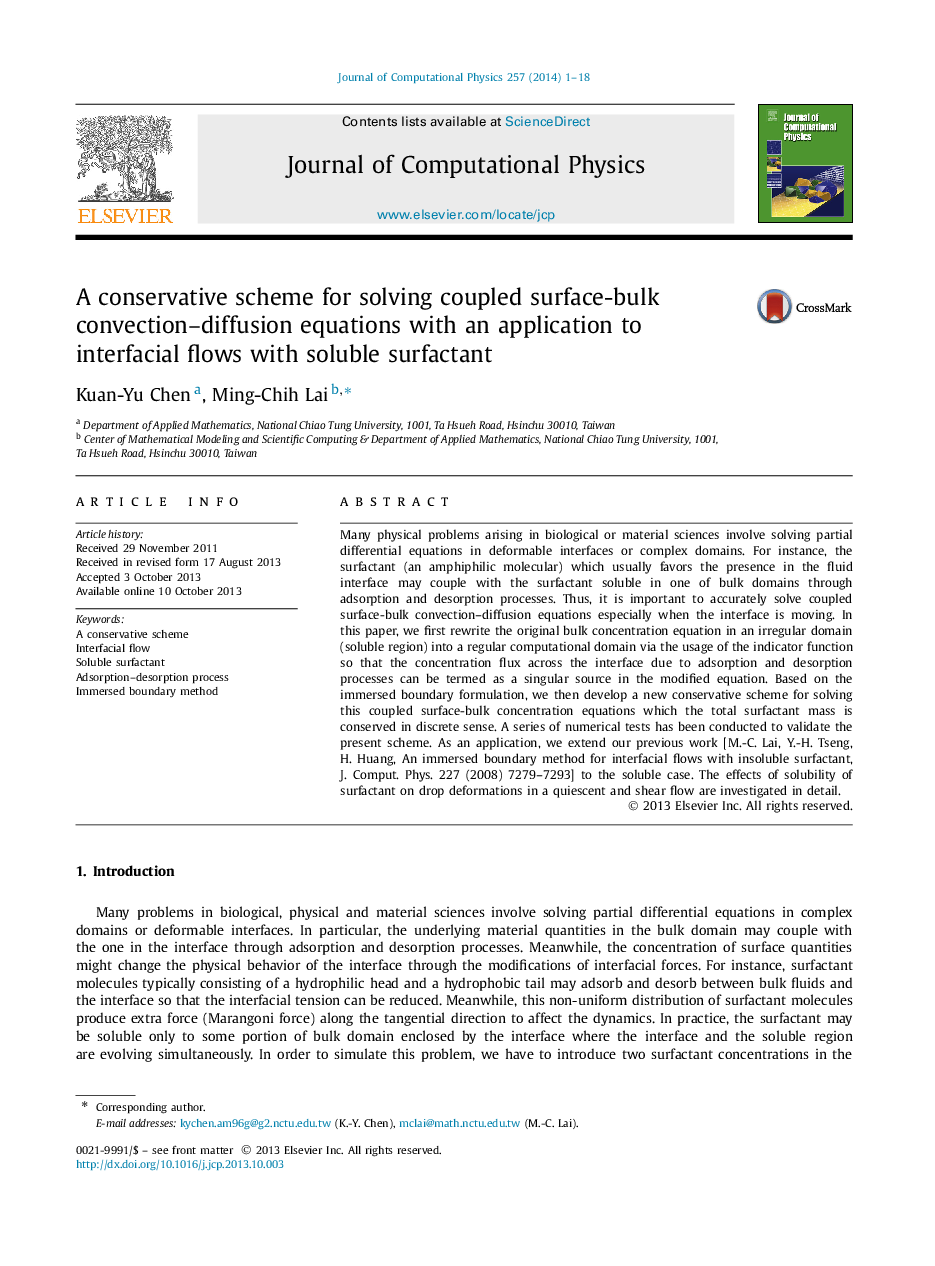| Article ID | Journal | Published Year | Pages | File Type |
|---|---|---|---|---|
| 10355965 | Journal of Computational Physics | 2014 | 18 Pages |
Abstract
Many physical problems arising in biological or material sciences involve solving partial differential equations in deformable interfaces or complex domains. For instance, the surfactant (an amphiphilic molecular) which usually favors the presence in the fluid interface may couple with the surfactant soluble in one of bulk domains through adsorption and desorption processes. Thus, it is important to accurately solve coupled surface-bulk convection-diffusion equations especially when the interface is moving. In this paper, we first rewrite the original bulk concentration equation in an irregular domain (soluble region) into a regular computational domain via the usage of the indicator function so that the concentration flux across the interface due to adsorption and desorption processes can be termed as a singular source in the modified equation. Based on the immersed boundary formulation, we then develop a new conservative scheme for solving this coupled surface-bulk concentration equations which the total surfactant mass is conserved in discrete sense. A series of numerical tests has been conducted to validate the present scheme. As an application, we extend our previous work [M.-C. Lai, Y.-H. Tseng, H. Huang, An immersed boundary method for interfacial flows with insoluble surfactant, J. Comput. Phys. 227 (2008) 7279-7293] to the soluble case. The effects of solubility of surfactant on drop deformations in a quiescent and shear flow are investigated in detail.
Related Topics
Physical Sciences and Engineering
Computer Science
Computer Science Applications
Authors
Kuan-Yu Chen, Ming-Chih Lai,
